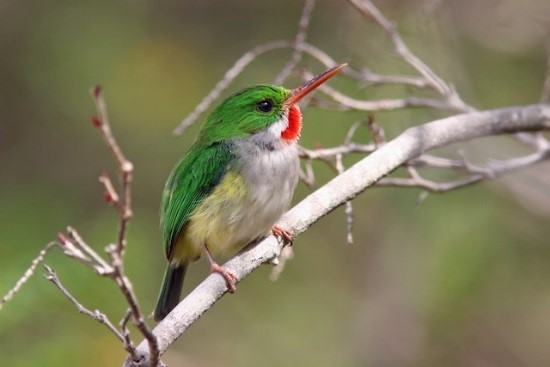Birdfinding.info ⇒ Common in all types of native forest and some disturbed woodlands. Can usually be found at forested sites such as Cambalache, Río Abajo, Maricao, and Guánica State Forests, and El Yunque National Forest. Typically uses earthen banks for its nest burrows, so it tends to be found near streams, gulleys, road cuts, and other formations that expose surfaces suitable for horizontal excavation.
Puerto Rican Tody
Todus mexicanus
Endemic to Puerto Rico, where it occurs in a wide array of wooded habitats throughout the island, from the dry thickets of the southwestern lowlands to montane rain forests.
Identification
Unique within its range. Easily recognized by its tiny size, round body, long bill, bright green upperparts, and ruby red throat.

Puerto Rican Tody, male showing extensively yellow underparts. (Guánica State Forest, Puerto Rico; June 1, 2013.) © Ernesto Burgos
Sides and belly are washed yellow, which varies from subtle to bright and extensive.
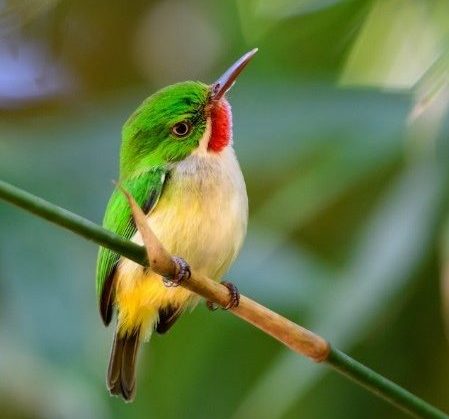
Puerto Rican Tody, female. (Río Abajo State Forest, Puerto Rico; February 7, 2019.) © Cynthia Carlson
The sexes are distinguished by iris color: dark in males, pale in females.

Puerto Rican Tody, male. (Gazebos de Carite, Puerto Rico; April 1, 2018.) © José Santiago
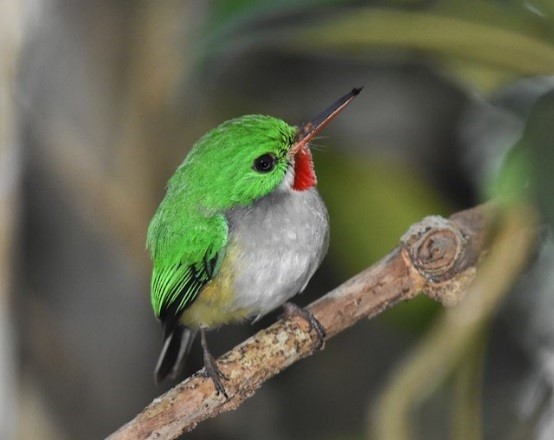
Puerto Rican Tody, male. (Maricao State Forest, Puerto Rico; May 18, 2015.) © Daniele Mitchell

Puerto Rican Tody, female with band on leg. (Guánica State Forest, Puerto Rico; January 30, 2010.) © Steve Metz

Puerto Rican Tody, male. (Barrio Naranjo Comerío, Puerto Rico; March 20, 2009.) © Ernesto Burgos

Puerto Rican Tody, female. (Guánica State Forest, Puerto Rico; June 1, 2013.) © Ernesto Burgos
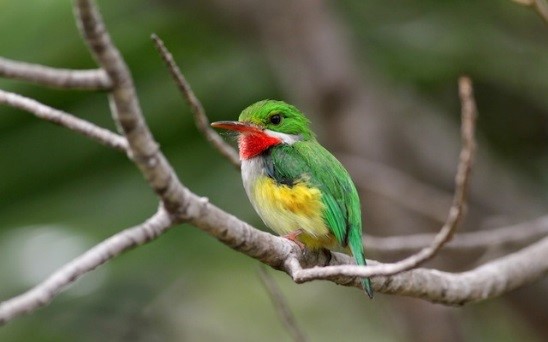
Puerto Rican Tody, male showing bright yellow tufts on the flanks. (Guánica State Forest, Puerto Rico; April 20, 2014.) © Jay McGowan
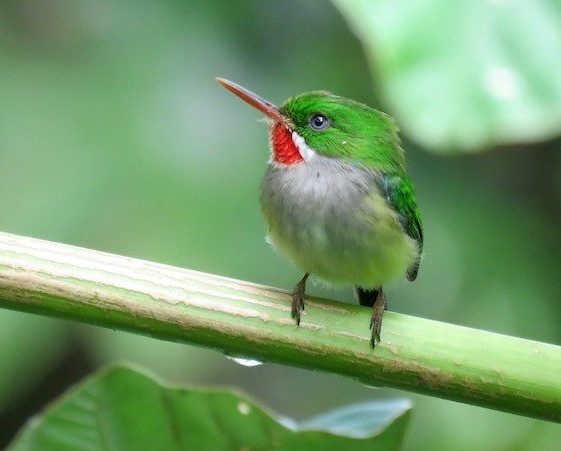
Puerto Rican Tody, female. (El Yunque National Forest, Puerto Rico; January 6, 2019.) © John Zakelj
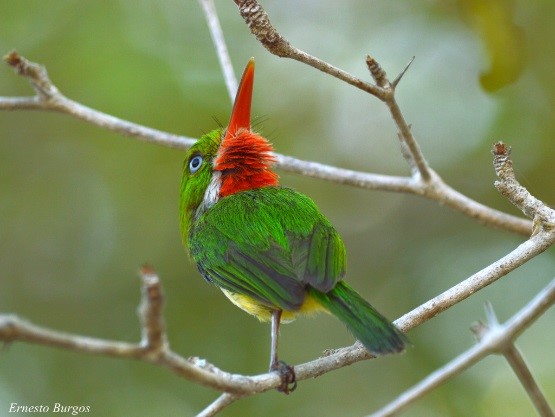
Puerto Rican Tody, female, apparently posing for a cubist painting. (Guánica State Forest, Puerto Rico; June 1, 2013.) © Ernesto Burgos
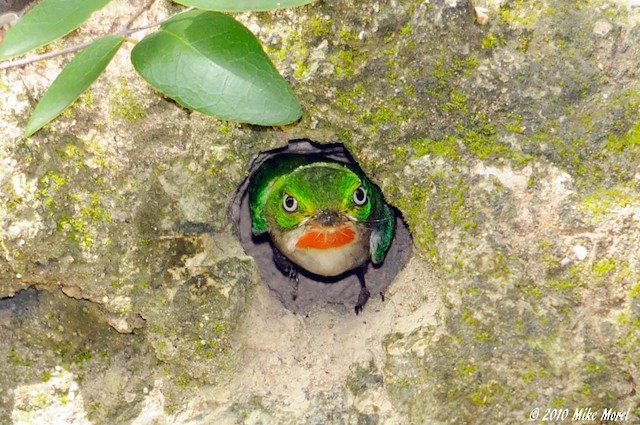
Puerto Rican Tody, female, poised to repel a threat to her burrow. (Guánica State Forest, Puerto Rico; July 7, 2010.) © Michael J. Morel
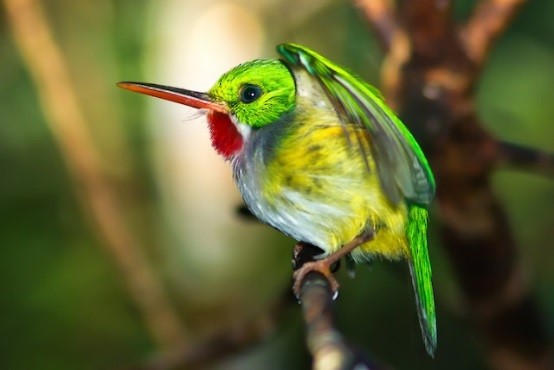
Puerto Rican Tody, male. (Guánica State Forest, Puerto Rico; December 27, 2012.) © graichen & recer
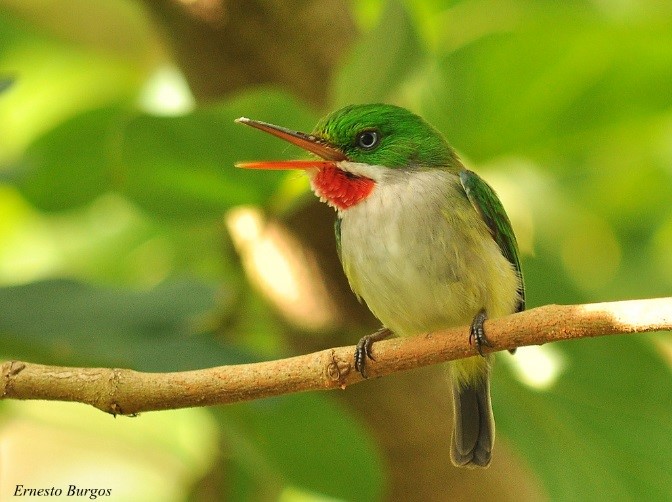
Puerto Rican Tody, female scolding. (Barrio Naranjo, Comerío, Puerto Rico; May 2, 2009.) © Ernesto Burgos
Notes
Monotypic species.
References
eBird. 2018. eBird: An online database of bird distribution and abundance. Cornell Lab of Ornithology, Ithaca, N.Y. http://www.ebird.org. (Accessed September 29, 2018.)
Fremgen, A. 2013. Puerto Rican Tody (Todus mexicanus), version 1.0. In Neotropical Birds Online (T.S. Schulenberg, ed.). Cornell Lab of Ornithology, Ithaca, N.Y. https://doi.org/10.2173/nb.purtod1.01.
Kepler, K.A., and G.M. Kirwan. 2017. Puerto Rican Tody (Todus mexicanus). In Handbook of the Birds of the World Alive (J. del Hoyo, A. Elliott, J. Sargatal, D.A. Christie, and E. de Juana, eds.). Lynx Edicions, Barcelona. https://www.hbw.com/node/55817. (Accessed November 28, 2017.)
Raffaele, H. 1989. A Guide to the Birds of Puerto Rico and the Virgin Islands. Princeton University Press, Princeton, N.J.
Raffaele, H., J. Wiley, O. Garrido, A. Keith, and J. Raffaele. 1998. A Guide to the Birds of the West Indies. Princeton University Press, Princeton, N.J.
